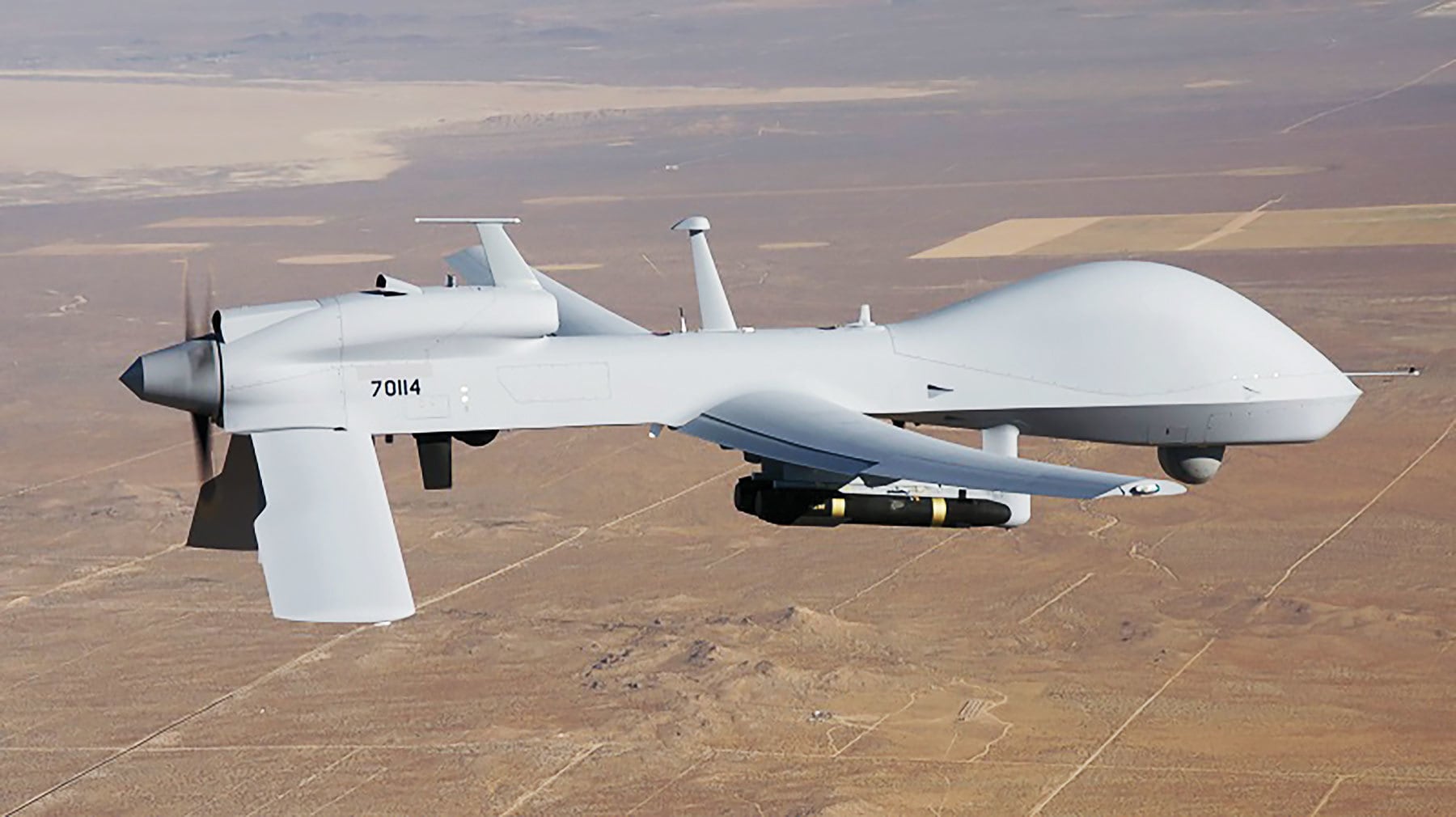WASHINGTON — The Army eliminated its plan to buy a top electronic warfare system for Fiscal 2022, cutting about $12 million in spending on the drone-mounted jamming pod under development, budget documents Friday showed.
The decision to delay buying the Multi-Function Electronic Warfare pod is part of the Army’s broader budget trimming, reflected in its decision to cut its request for electronic warfare by more than half — seeking $48 million in FY22, compared to $113 million enacted the year before.
Once the MFEW cyber and jamming pod completes developmental testing, it can re-compete for procurement funding in future budgets, according to Army senior leaders.
Army officials have touted the system as key to regrowing the service’s prowess within the electromagnetic spectrum, which has significantly grown in importance over the past few years, especially following observations the Army made of Russia’s recent incursions into Ukraine, where Russia was able to jam communications and geolocate forces based solely on their electromagnetic footprint. Following those events, the Army issued several urgent-need capabilities in Europe to keep pace with Russia.
The Army has tested the jamming pod recently to help leaders make funding decisions for future budgets.
“We’ve definitely had some challenges with this program. Not from a technology perspective, it’s really been from a funding perspective,” Col. Kevin Finch, project manager for electronic warfare and cyber at Program Executive Office Intelligence, Electronic Warfare and Sensors, said May 26 during a conference hosted by the Association of Old Crows. “This particular program has been doing really well in addressing, providing that capability to the CABs [combat aviation brigades] and the units.”
The Army is developing the project’s Air Large portion, the service’s first organic brigade electronic attack asset mounted on an MQ-1C Gray Eagle drone, and the service plans to develop smaller pods that will fit on smaller unmanned systems in the future.
Lockheed Martin has worked on the pod mostly under its own internal research and development funds. A Gray Eagle with the pod recently participated in Edge 21, an airborne exercise that will serve as the precursor the Project Convergence event, the Army’s premier demonstration for joint war-fighting efforts. At each successive event, the system has expanded the electronic attack techniques, and the Army expects to incorporate cyber capabilities this summer.
According to budget documents last year, the Army’s total obligation for the project for fiscal 2022 was $19.2 million. In fiscal 2021, the service’s procurement dollars for the system were slated to to support procurement of one pod from the project.
As the Army has sought to make cuts across its programs, the number of programs available to cut is getting thinner and thinner. In fiscal 2020, the service cut 93 programs, followed by 41 the next year and seven proposed for fiscal 2022, meaning the decisions of what to trim are getting more difficult.
This is in contrast to a variety of new electronic warfare units, electronic warfare systems and a growth in force funded through previous budgets.
Mark Pomerleau is a reporter for C4ISRNET, covering information warfare and cyberspace.








